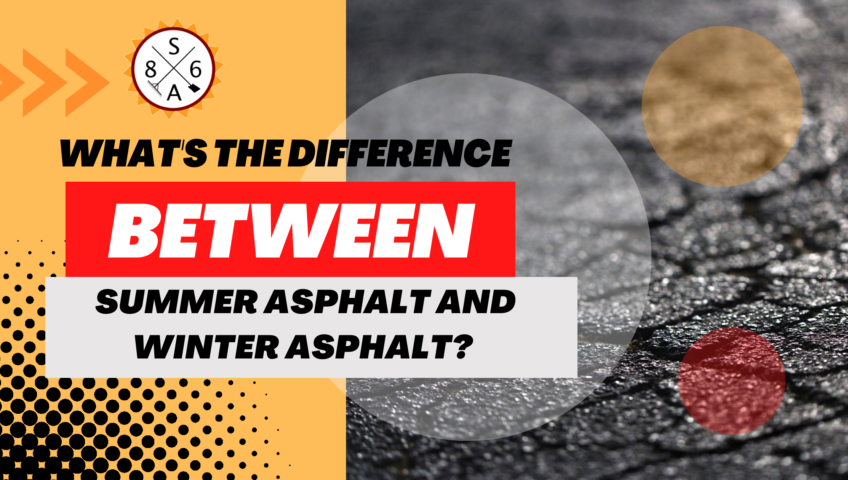
5 Things You Need to Know About Alligator Cracking
Concrete cracking occurs for a number of reasons, and it’s important to take care of cracks to prolong the lifespan of your asphalt. Alligatored asphalt is a term used by concrete companies to identify cracks that look like alligator skin. The cracks can be small, and caused by too much traffic, heavy loads, or from temperature extremes. If you have problems with the structural integrity of your concrete, it’s time to learn more about solving the problem.
Alligator Cracking Is Common
One of the first things to understand about concrete cracking, is that alligator cracking is a common type of damage you will see with asphalt. It can occur no matter how old the concrete is, and will need to be repaired to prevent water from getting below the surface to cause further issues.
Heavy Loads are Only One Cause of Alligator Cracking
Too much weight on your driveway or parking lot is only one way that alligator cracking occurs. Excessive traffic on the concrete will eventually cause it to wear down and crack. An inadequate subgrade below the surface can lead to alligator cracking, because the concrete is not being properly supported during use.
It’s Expensive to Neglect Alligator Cracks
If you don’t take the time to repair small concrete cracking issues, it is going to get expensive to repair the problem over time. When you ignore alligator cracks in concrete, the integrity of the surface of your driveway or parking lot is ruined. This means water and other debris can get below the surface, degrading the supporting foundation. Cracks will start to get larger, and eventually you will need to replace the entire project.
You Can Clean Alligatored Concrete Easily
Understand that you don’t have to use a pressure washer in order to properly clean alligatored concrete. This surface can be cleaned with a regular hose, water, and stiff broom to remove dirt and debris. If you try to use a pressure washer on alligatored concrete, you could end up applying too much pressure and causing further damage to the concrete.
Summer is the Best Time to Repair Concrete
If you have alligatored asphalt on your property, summer is the best time to consider hiring concrete companies to take care of the work for you. The weather is nice, and you want to be sure that you have enough warmth for the asphalt to cure. When asphalt is laid in the warm weather months, it can be applied with the intent that it will shrink slightly when the cold weather hits. If you have noticed problems with alligator concrete cracking, summer is a great time to call for a repair.
When you take good care of your asphalt, it can last for many years without a problem. Pay attention to any small cracks, and get those filled in before they become too large to repair. Avoid heavy traffic on your concrete, and clean the surface periodically to remove any dirt, debris or chemical spills. When you take care of small repairs, your driveway is going to last longer. Good maintenance is less expensive than replacing the existing surface because of neglect.
Concrete cracking occurs for a number of reasons, and it’s important to take care of cracks to prolong the lifespan of your asphalt. Alligatored asphalt is a term used by concrete companies to identify cracks that look like alligator skin. The cracks can be small, and caused by too much traffic, heavy loads, or from temperature extremes. If you have problems with the structural integrity of your concrete, it’s time to learn more about solving the problem.
Alligator Cracking Is Common
One of the first things to understand about concrete cracking, is that alligator cracking is a common type of damage you will see with asphalt. It can occur no matter how old the concrete is, and will need to be repaired to prevent water from getting below the surface to cause further issues.
Heavy Loads are Only One Cause of Alligator Cracking
Too much weight on your driveway or parking lot is only one way that alligator cracking occurs. Excessive traffic on the concrete will eventually cause it to wear down and crack. An inadequate subgrade below the surface can lead to alligator cracking, because the concrete is not being properly supported during use.
It’s Expensive to Neglect Alligator Cracks
If you don’t take the time to repair small concrete cracking issues, it is going to get expensive to repair the problem over time. When you ignore alligator cracks in concrete, the integrity of the surface of your driveway or parking lot is ruined. This means water and other debris can get below the surface, degrading the supporting foundation. Cracks will start to get larger, and eventually you will need to replace the entire project.
You Can Clean Alligatored Concrete Easily
Understand that you don’t have to use a pressure washer in order to properly clean alligatored concrete. This surface can be cleaned with a regular hose, water, and stiff broom to remove dirt and debris. If you try to use a pressure washer on alligatored concrete, you could end up applying too much pressure and causing further damage to the concrete.
Summer is the Best Time to Repair Concrete
If you have alligatored asphalt on your property, summer is the best time to consider hiring concrete companies to take care of the work for you. The weather is nice, and you want to be sure that you have enough warmth for the asphalt to cure. When asphalt is laid in the warm weather months, it can be applied with the intent that it will shrink slightly when the cold weather hits. If you have noticed problems with alligator concrete cracking, summer is a great time to call for a repair.
When you take good care of your asphalt, it can last for many years without a problem. Pay attention to any small cracks, and get those filled in before they become too large to repair. Avoid heavy traffic on your concrete, and clean the surface periodically to remove any dirt, debris or chemical spills. When you take care of small repairs, your driveway is going to last longer. Good maintenance is less expensive than replacing the existing surface because of neglect.




